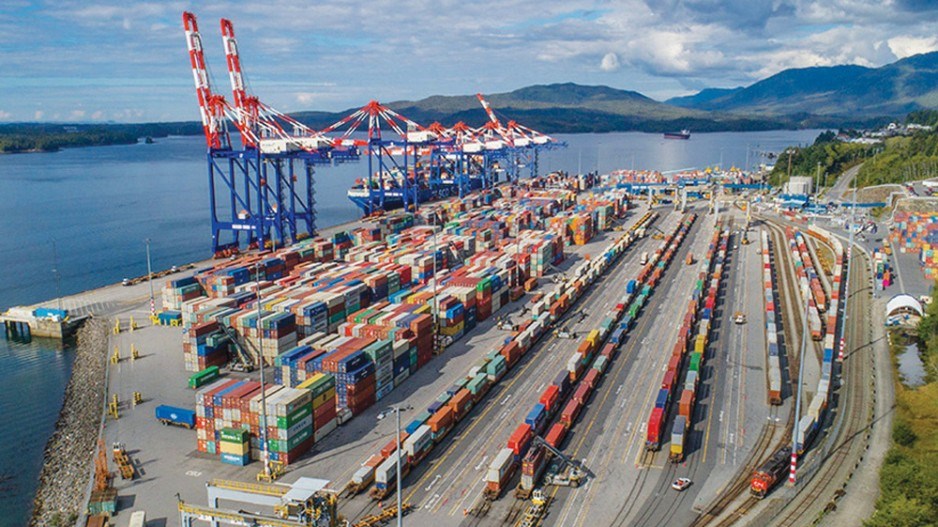The Port of Prince Rupert – which is currently undergoing an expansion of its existing container terminal to make it the second-largest in Canada – is now looking at building another such facility that would more than double the port’s overall container capacity.
The Prince Rupert Port Authority and operator DP World Canada Inc. said this morning that the two groups have signed a two-year agreement “to assess the feasibility of an innovative new container terminal project in Prince Rupert.”
The new container terminal – which would be completely separate from the existing Fairview Terminal operated by DP World – could add as much as 2 million TEUs of annual capacity to Prince Rupert. Officials said such a move would greatly boost Canada’s trade capacity within the Asia-Pacific region as the country’s top port – Port of Vancouver – faces increasing challenges with congestion.
DP World Canada CEO and general manager Maksim Mihic said in a statement that the move shows that his company is clearly committed and confident that Prince Rupert can support a second container terminal facility.
“Our vision for this proposed project will ensure the Canadian trade and supply chain landscapes are future-proofed,” Mihic said in the statement. “The feasibility studies will employ a pragmatic approach, exploring the use of advanced technologies and ideas to position the new terminal as an industry leader within Canada and the world.”
Earlier this month, officials said the first stage of Fairview Terminal’s latest 2B expansion – which would eventually push the facility’s capacity to 1.8 million TEUs when the whole project is completed in 2024 – is on schedule for completion this summer. That first stage of the 2B expansion would push the annual capacity at Fairview 1.35 million TEUs currently to 1.6 million TEUs by July.
Meanwhile, while Prince Rupert saw a surprising 23% drop in cargo movements in 2021 versus 2020, officials remain bullish as the infrastructure issues near Vancouver – such as the rail/road washouts late last year – have brought renewed attention and interest in the northern trade corridor as a backup or alternative to access the Pacific.
Prince Rupert Port Authority president and CEO Shaun Stevenson said that the new terminal – which is part of the port’s master plan published in 2019 – would be located to the south of Fairview and would add to the port’s status as Canada’s third-largest (behind only Vancouver and Montreal).
“A second container terminal will help consumers, exporters and industries across the country while continuing to contribute significant economic benefit for local communities, the broader region and our Indigenous partners,” Stevenson said in a statement.
Meanwhile, Port of Vancouver continues to push its massive but controversial Roberts Bank Terminal 2 project for its own container capacity expansion. Ottawa recently extended the latest public comment period to mid-March after putting the environmental approval process on ice for about a year as strong local opposition pushed the federal government to ask the Vancouver Fraser Port Authority to address questions raised by opponents in the previous panel reviews.
The Vancouver Fraser Port Authority came back with its updated Terminal 2 application late last year, although opponents like environmentalists, First Nations communities, local residents and even GCT Global Container Terminals (the operator of the existing Deltaport terminal at Roberts Bank) have remained unconvinced about T2’s scale, cost and environmental impact.




